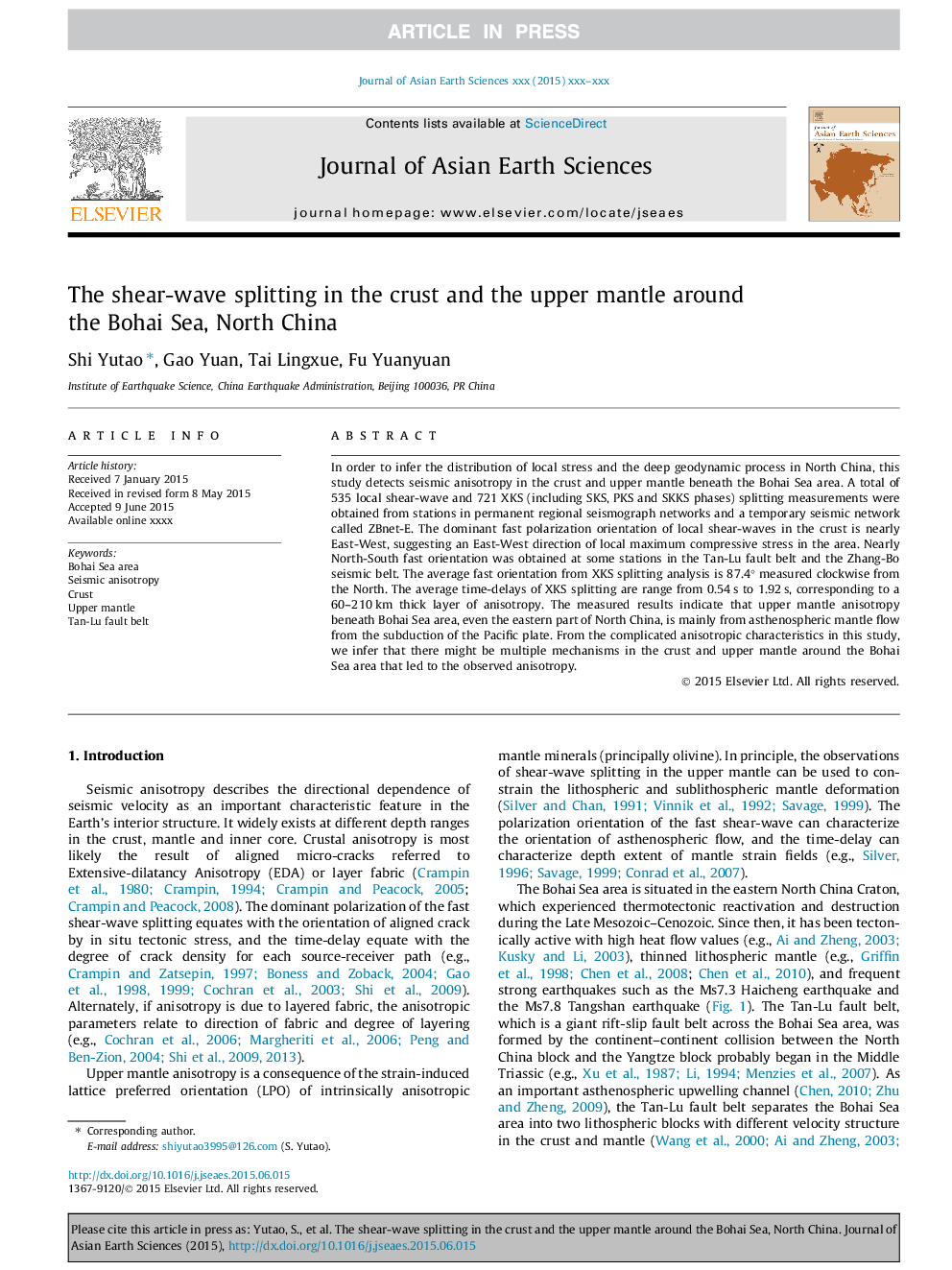| Article ID | Journal | Published Year | Pages | File Type |
|---|---|---|---|---|
| 6444195 | Journal of Asian Earth Sciences | 2015 | 12 Pages |
Abstract
In order to infer the distribution of local stress and the deep geodynamic process in North China, this study detects seismic anisotropy in the crust and upper mantle beneath the Bohai Sea area. A total of 535 local shear-wave and 721 XKS (including SKS, PKS and SKKS phases) splitting measurements were obtained from stations in permanent regional seismograph networks and a temporary seismic network called ZBnet-E. The dominant fast polarization orientation of local shear-waves in the crust is nearly East-West, suggesting an East-West direction of local maximum compressive stress in the area. Nearly North-South fast orientation was obtained at some stations in the Tan-Lu fault belt and the Zhang-Bo seismic belt. The average fast orientation from XKS splitting analysis is 87.4° measured clockwise from the North. The average time-delays of XKS splitting are range from 0.54 s to 1.92 s, corresponding to a 60-210 km thick layer of anisotropy. The measured results indicate that upper mantle anisotropy beneath Bohai Sea area, even the eastern part of North China, is mainly from asthenospheric mantle flow from the subduction of the Pacific plate. From the complicated anisotropic characteristics in this study, we infer that there might be multiple mechanisms in the crust and upper mantle around the Bohai Sea area that led to the observed anisotropy.
Keywords
Related Topics
Physical Sciences and Engineering
Earth and Planetary Sciences
Geology
Authors
Shi Yutao, Gao Yuan, Tai Lingxue, Fu Yuanyuan,
